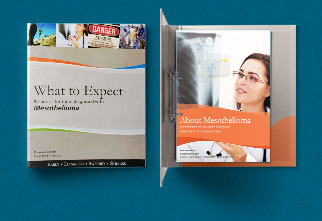Most Asbestos Diseases Linked to Mine Workers

April 09, 2000
Erica Curless, Missoulian State Bureau.
Direct exposure
HELENA - Most Libby residents with asbestos-related diseases had a direct connection to the former vermiculite mine or its workers, the federal Environmental Protection Agency has concluded.
This informal finding backs the agency's original guess about how residents were exposed to the deadly asbestos fibers that have allegedly killed 192 miners and family members and made another 375 ill. It also confirms that it's unlikely people are getting sick from just living in the area, home to the W.R. Grace and Co. vermiculite mine until 1990.
"What it means anecdotally is most of the cases we have out there are occupationally related or related to family exposure," said EPA on-scene coordinator Paul Peronard. "Yeah, we knew that, but this is how we know that this supports that hypothesis."
A representative from the Maryland-based mining company said the EPA findings speak for themselves.
"Paul's comments stand on their own," said Bill Corcoran, Grace vice president of public and regulatory affairs.
The EPA reviewed about 200 cases of Libby residents who have asbestos-related diseases such as asbestosis, lung cancer and mesothelioma.
Peronard reiterated that this study was informal and didn't carefully scrutinize all the clinical evidence or include all known cases of asbestos-related illness in the community.
It consisted of interviewing three doctors, who have treated the majority of asbestos exposures in the area, about the patients' history - other medical problems, whether they worked at the mine or if they played in the vermiculite piles.
Only two of the 200 reviewed cases were not related to some sort of direct exposure to asbestos or asbestos-contaminated vermiculite, Peronard said.
It's possible the doctors didn't have a complete history on these patients or that they may have gotten exposed to asbestos by just living in the town, he added.
This uncertainty is why the EPA continues to sample the area, looking for hot spots of contamination.
Peronard reiterates that more testing is needed and that the upcoming medical screenings are the only way to find factual answers.
"That's going to be the true indication of what the medical problems are going to be," Peronard said.
But it's likely most of the contamination is linked directly to the former mine, he said.
These preliminary conclusions show that 85 percent to 90 percent of the people included in those 200 cases worked at the mine.
When miners dug the earth for vermiculite ore they also stirred up asbestos, a mineral that naturally occurs in the Kootenai Valley. Asbestos is harmful to humans when inhaled because the needle-like fibers stick in the lung's lining and eventually cause disease. The damage from asbestos in mining is irreversible. Vermiculite itself is harmless.
In addition, of those 200 cases, 27 patients had family members who worked at the mine. Miners often tracked the asbestos dust into their homes on their work clothes, contaminating their families.
Six people didn't have an occupational link to the mine but did have direct contact with the exfoliated vermiculite. Many children, including Gov. Marc Racicot, played in vermiculite piles that dotted the town.
Although Grace tried to remove impurities, such as asbestos, from the vermiculite, it wasn't 100 percent successful. The EPA is still unclear how much asbestos is contained in vermiculite products, such as the housing insulation known as Zonolite found in thousands of home in Montana and across America.
The agency urges people to treat it like a hazardous material and leave it alone.
"So the big picture is no matter what we see now, most of these exposures had to be from working in the mine or living with someone who did," Peronard said. "The next big exposure was you had to have direct contact (with vermiculite)."
The federal Agency for Toxic Substances and Disease Registry will begin medical screenings, which include chest x-rays and pulmonary function tests, in May. Officials anticipate testing up to 5,000 former and current Libby residents.
Request a Free Case Evaluation
Request a free case evaluation now if you or someone you love has been diagnosed with mesothelioma. The evaluation will cost you nothing. Our lawyers will travel to visit you at your convenience or conference call with you over the phone. We understand how difficult a time this is for you and will assist in any way that we can. You can also call us toll-free at 1-800-336-0086 at any time.

Results
The jury awards and settlements we have received for our clients are among the highest in the country.
Occupation/Exposure
Mechanic
Age
66
State
WA
Results
~$102,200,000
Occupation/Exposure
Cosmetic Talc User
Age
75
State
AZ
Results
~$22,200,000
Occupation/Exposure
Talc Powder User
Age
59
State
UT
Results
~$20,000,000
Occupation/Exposure
Home Renovator
Age
75
State
RI
Results
~$15,100,000
Occupation/Exposure
Electrician
Age
62
State
NV
Results
~$13,800,000
Occupation/Exposure
Plumber
Age
49
State
CA
Results
~$13,500,000
Occupation/Exposure
Abatement Worker
Age
70
State
CT
Results
~$12,600,000
Occupation/Exposure
Pipefitter
Age
58
State
OH
Results
~$12,200,000
Occupation/Exposure
Pipefitter
Age
65
State
NV
Results
~$12,000,000
Occupation/Exposure
Navy Veteran
Age
48
State
CA
Results
~$11,700,000
Occupation/Exposure
Air Force Veteran
Age
84
State
KY
Results
~$11,700,000
Occupation/Exposure
Hairdresser
Age
66
State
MD
Results
~$11,500,000
